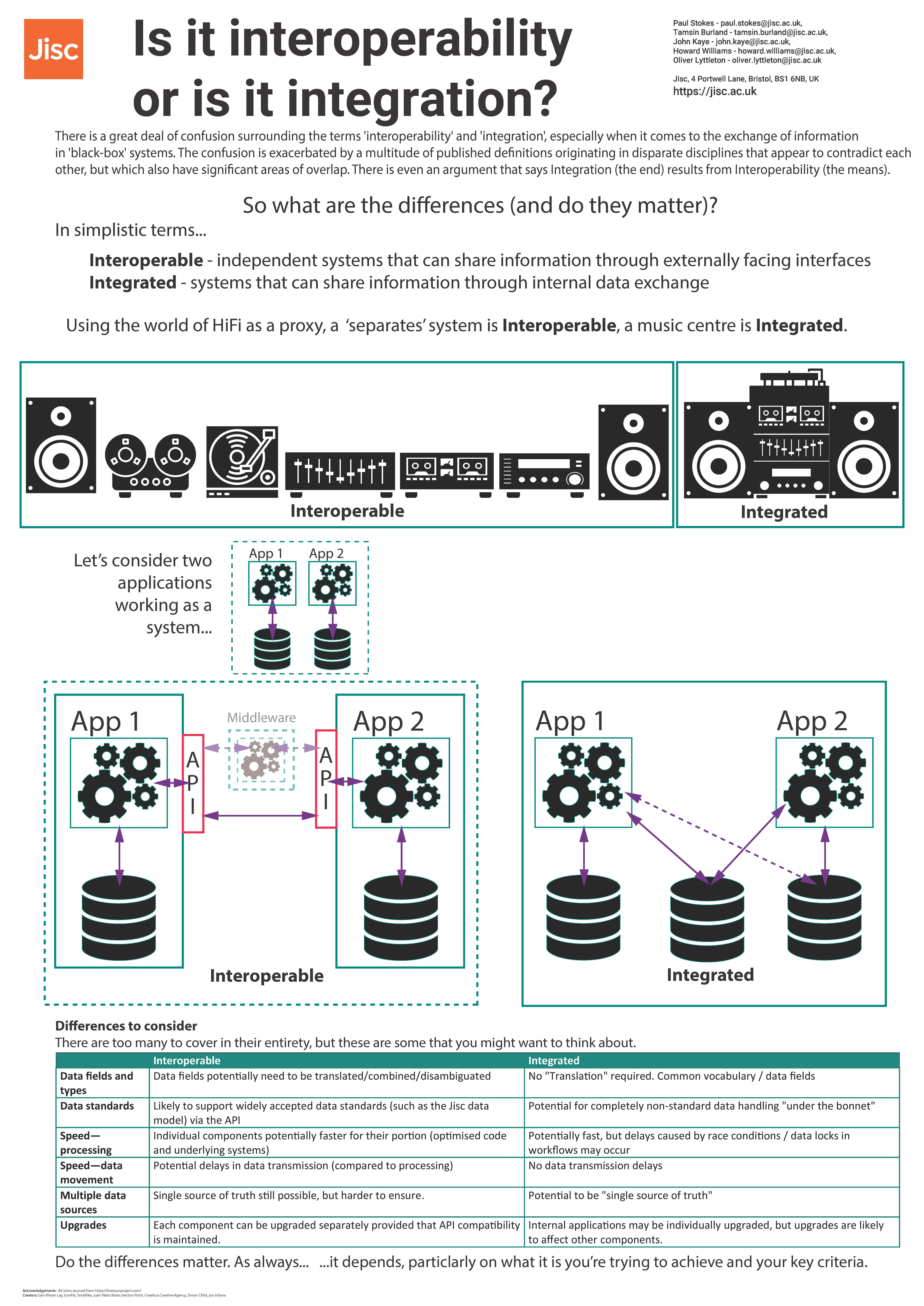This poster is part of the Open Repositories 2021 Poster Session which takes place in the week of June 7-10. We encourage you to ask questions and engage in discussion on this poster by using the comments feature. Authors will respond to comments during this week.
Authors:
Paul L.S. Stokes; Tamsin Burland; John Kaye; Howard Williams
Poster description:
For those not of a technical bent, there is a great deal of confusion surrounding the terms ‘interoperability’ and ‘integration’, especially when it comes to the exchange of information in ‘black-box’ systems. The average depositor of data doesn’t want (or need) to know how data and meta data move around a system as long as what they put in eventually gets to where it should be, in the form it should be and can be seen by the appropriate people. However, a basic understanding of the similarities and differences between ‘interoperable’ systems and ‘integrated’ systems and the pros and cons of each approach when it comes to depositing, preserving and discovering data will help users and administrators make informed decisions when it comes to the specification of data management systems, and will help inform their day-to-day data management practices. This poster is intended to highlight those similarities and differences, pros and cons.
(Click on the image to expand)
About the authors:
Paul Stokes has had a varied career in both the commercial sector and academia (and all points in-between). At present he leads on preservation for Jisc’s Preservation service (and is currently referred to as a “Product Manager”). He is a director of the Digital Preservation Coalition (DPC) and a director of the Open Preservation Foundation (OPF). He’s been passionate about repositories and preservation for many decades and currently also has a number of bees in his bonnet regarding costs, value, sustainability, and storage.

